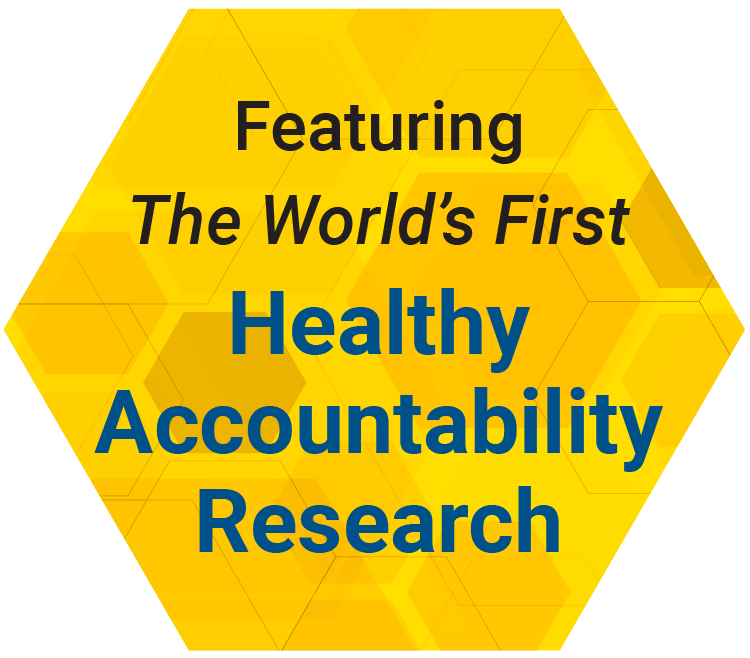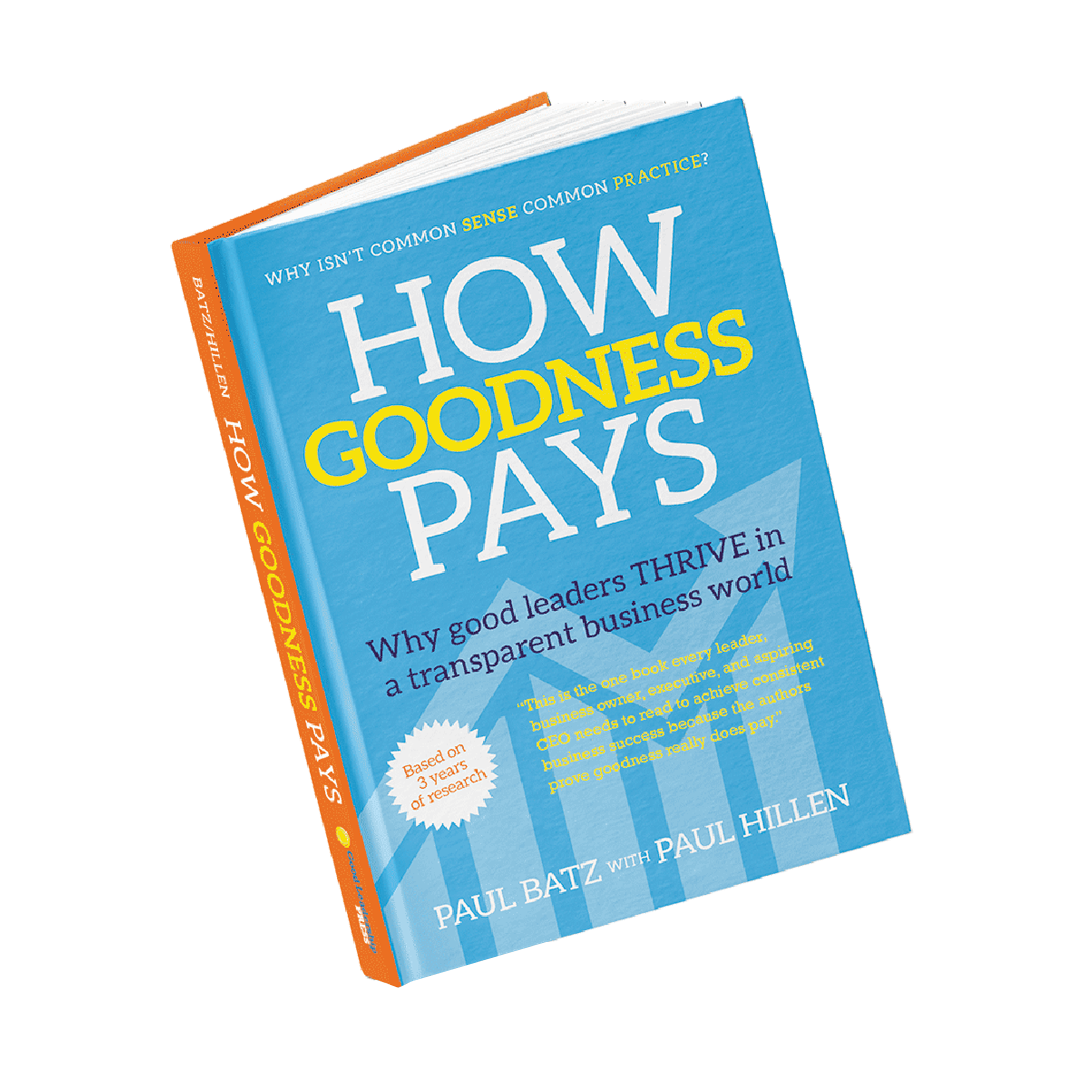Goodness Pays

Four out of five leaders believe goodness pays, yet only two out of five understand how goodness drives better financial results.
About Good Leadership
Good Leadership is an organizational effectiveness firm that aligns teams to thrive and win together. Clients leverage our coaching processes and development programs to strengthen their links to execution and build leadership capacity around the central concept: Goodness pays.
The Cornerstones of Goodness
The research-backed values most closely tied to an effective goodness culture
Excellence
Consistently high quality attracts long-term customers – poor quality causes expensive rework, recalls, and customer turnover.
Generosity
Teams form more quickly and give their best effort to leaders who are generous with their time and attention – stingy leaders create fear, hesitation, and a scarcity mindset that hurts productivity.
Fairness
Trust, respect, and free-flowing communication are alive in teams where leaders promote fairness – when teammates feel dismissed, held back, and marginalized people shut down and reject their accountabilities.
Positivity
Encouragement, hope, and optimism win the day in the context of an increasingly cynical and negative society – toxic leaders who stoke negativity and pit people against one another create poor decision-making and aggressive behavior in others.
The Service Value Chain Still Applies
Leaders who believe goodness pays operate with a level of transparency and good intentions that others can sense and act upon. In other words, when employees feel excellence, generosity, fairness, and positivity in their workplace, they take really good care of their customers. Goodness pays when people thrive together, in a culture of encouragement, accountability, and positive teamwork. That’s how goodness pays.
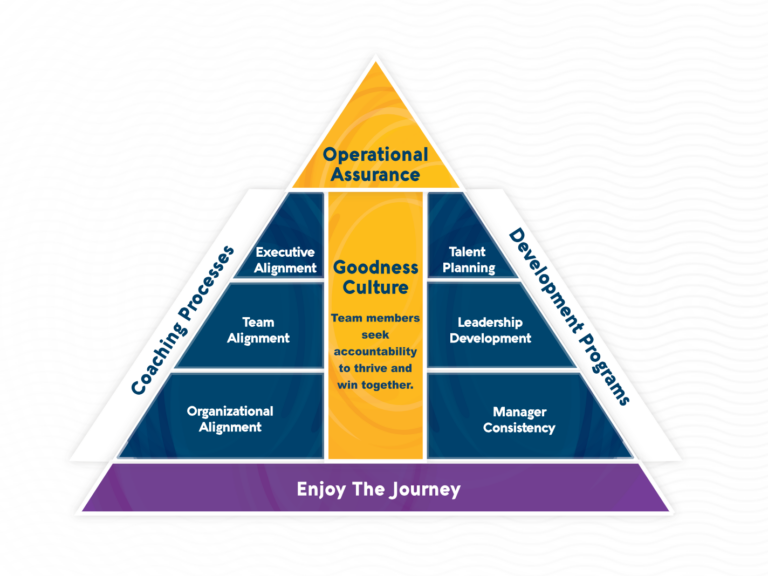
Organizational Effectiveness is the ability of an organization to efficiently achieve its goal and objectives.
The three things effective organizations must get right:
- The teams at the top need to be aligned
- Team leaders need to be trained on the same teaming methodology and language
- Organization needs to have industry A-players in mission critical roles
Create a Culture of Goodness in which team members seek accountability to thrive and win together.
Most leaders get work/life balance and accountability all wrong. They are not scarcity and fear concepts.
When team members seek accountability with clear expectations, the likelihood of burnout is reduced, trust and respect are strengthened, and both positivity and productivity are enhanced in the team. In this environment, all team members can enjoy their journey both personally and professionally.
Good Leaders Have the Power to Improve the World.
Teams Aligned Around Goodness
Goodness in business is when people thrive together in a culture of encouragement, accountability, and positive teamwork.
When leaders prioritize goodness, they create an environment where employees feel valued, motivated, and engaged. This allows leaders to use their best energy in making competitive moves in the market and attracting and developing the best talent to grow their enterprise.
The Five Goodness Pays Factors
Compelling Business Plan
Creating a clear and actionable roadmap for the organization's success, which aligns with its mission and values, and inspires confidence in the team.
Belief that Profits are Healthy for All
Fostering an understanding that financial success benefits all stakeholders, including employees, clients, and the community, and that it enables further growth and positive results.
Team-based Culture
Encouraging collaboration, open communication, and shared ownership of goals, which empowers teams to collectively contribute to the organization's success.
Timely and Transparent Decision-making
Ensuring that leaders make informed decisions promptly, while maintaining openness and honesty about the decision-making process, reinforcing trust within the organization.
Magnetic Ethics
Upholding strong ethical principles that guide the actions and decisions of the organization, attracting like-minded individuals and partners who are committed to contributing to positive results in the world.
Discover How Goodness Pays®
Goodness Defined:
Goodness in business is when people thrive together in a culture of encouragement, accountability, and positive teamwork.
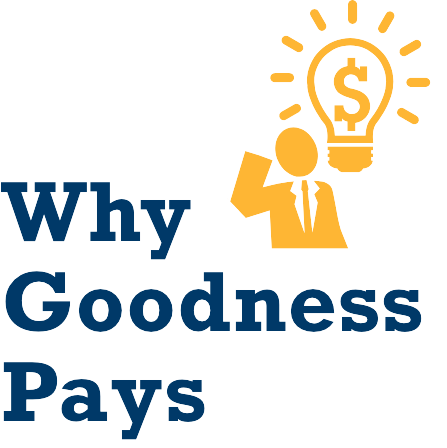
The answers are simple – because what we put out into the world comes back to us. And, what we concentrate on grows. There are many ways to get ahead in this world. Goodness is the most sustainable way because when people thrive together, they win together.
Brain science and social research confirm three specific ways goodness pays:
People are significantly more likely to help rather than hurt a fellow human being. It’s the fundamental reason why people chose to live and work together, instead of living and working alone. This is the law of reciprocity.
People are drawn to goodness because they are feeling overwhelmed with “dark noise.” The dark noise is the overexposure to chronically negative news stories about people suffering. This is the art of possibility.
Change has never been faster than today, and people are threatened by change. Neuroscience confirms we crave leaders who are inviting and encouraging – people who consistently radiate goodness. This is the law of attraction.
Each of these three reasons can be measured, calculated, and tied to better financial results.
5 Factors of Why Goodness Pays
Compelling Business Plan
Creating a clear and actionable roadmap for the organization's success, which aligns with its mission and values, and inspires confidence in the team.
Belief that Profits are Healthy for All
Fostering an understanding that financial success benefits all stakeholders, including employees, clients, and the community, and that it enables further growth and positive impact.
Team-based Culture
Encouraging collaboration, open communication, and shared ownership of goals, which empowers teams to collectively contribute to the organization's success.
Timely and Transparent Decision-making
Ensuring that leaders make informed decisions promptly, while maintaining openness and honesty about the decision-making process, reinforcing trust within the organization.
Magnetic Ethics
Upholding strong ethical principles that guide the actions and decisions of the organization, attracting like-minded individuals and partners who are committed to making a positive impact in the world.
How Goodness Pays
This book, How Goodness Pays, seeks to close the gap by specifically teaching those who believe in the power of goodness how to achieve positive financial results on a consistent basis. Through concrete examples and step-by-step instructions, the book shows how anyone can use goodness to create a prosperous future for themselves and their businesses.
Ultimately, How Goodness Pays is a must-read for anyone who wants to learn how to harness the power of goodness to create lasting success.
Team Momentum Survey
Customized and Actionable
Good Leadership’s proprietary Team Momentum Survey© provides a research-based, data-driven picture that reveals the degree to which a team is aligned, committed, and accountable for the results they expect. The survey provides a customized, actionable report with specific recommendations on how to embrace the healthy tension necessary to improve results.
Better results, faster.
Improve Momentum with a Simple Process
The Team Momentum Survey is an anonymous online survey with only 24 questions. After each team member invests less than 15 minutes in the survey, the Team Leader receives three insightful reports: Full Team Report, Team Leader Report, and Comments.
Better results are only a few clicks away.

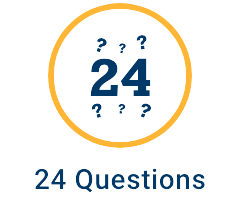
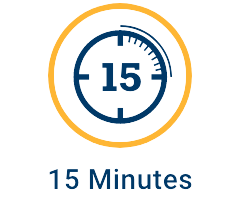

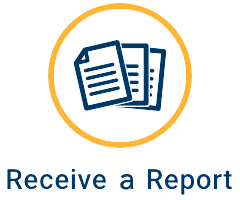
Good Leadership Values
Thrive Together
Reward Excellence
Live Generously
Promote Fairness
Spread Positivity
Goodness Pays Philosophy:

Team Coaching
Our team coaches your team to better business results, faster and easier.

Pragmatic Approach
We use a structured process backed by science to get to the next level faster.

Professional Coaches
We have real-world change management and executive leadership experience.

Aspirational Process
We stretch people to see what’s possible when they work together better.

